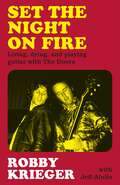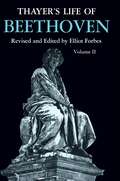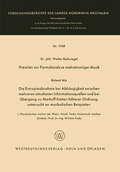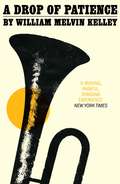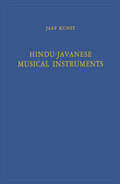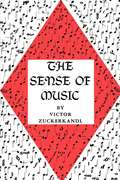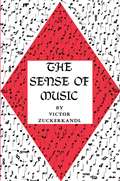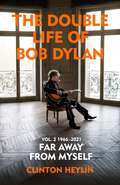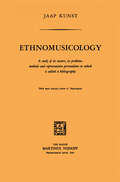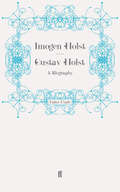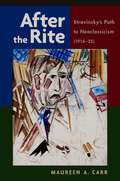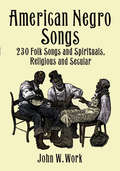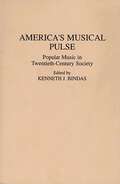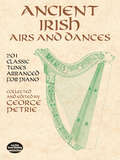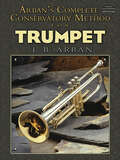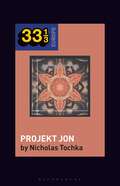- Table View
- List View
Set the Night on Fire: Living, Dying and Playing Guitar with the Doors
by Robby KriegerFew bands are as shrouded in the murky haze of rock mythology as The Doors, and parsing fact from fiction has been a virtually impossible task. But now, after fifty years, The Doors' notoriously quiet guitarist is finally breaking his silence to set the record straight.Through a series of vignettes, Robby takes readers back to where it all happened: the pawn shop where he bought his first guitar; the jail cell he was tossed into after a teenage drug bust; his parents' living room where his first songwriting sessions with Jim Morrison took place; and the many concert venues that erupted into historic riots.Robby also goes into heartbreaking detail about his life's most difficult struggles, ranging from drug addiction to cancer, but he balances out the sorrow with humorous anecdotes about run-ins with unstable fans, famous musicians, and one really angry monk. SET THE NIGHT ON FIRE is at once an insightful time capsule of 1960s counterculture and a moving reflection on what it means to find oneself as a musician. It's not only a must-read for Doors fans, but an essential volume of American pop culture history.
Thayer's Life of Beethoven, Part II
by Elliot ForbesAlexander Wheelock Thayer's Life of Beethoven. has long been recognized as the classic biography of Beethoven. "Thayer, with his calm and logical mind, scrupulous, magnanimous and spacious...had set out to describe for posterity the great man as he was and lived...and his patient realism and all but inexhaustible industry had created an irreplaceable and masterly portrait." So Van Wyck Brooks described this monumental work of the 1880's.Thayer talked with Beethoven's surviving friends, gathered anecdotes, and sifted hundreds of documents. The resulting wealth of detail stimulated other students, and a mass of Beethoven scholarship appeared. Now Elliot Forbes, one of the foremost Beethoven scholars of our time, has used this new material to bring the Life up to elate without sacrificing Thayer's text.
Theorien zur Formalanalyse mehrstimmiger Musik: Die Entropieabnahme bei Abhängigkeit zwischen mehreren simultanen Informationsquellen und bei Übergang zu Markoff-Ketten höherer Ordnung, untersucht an musikalischen Beispielen (Forschungsberichte des Landes Nordrhein-Westfalen #1768)
by Walter ReckziegelDer vorliegende Bericht stützt sich auf die Arbeiten von WILHELM PUCKS und baut auf den Methoden und Ergebnissen des genannten Autors auf. Die Kenntnis der im Verzeichnis angeführten Literatur darf vorausgesetzt werden. Die im Text erwähnten statistischen Begriffe (Mittelwert, Streuung etc. ) wurden von FUCKS zur Untersuchung musikalischer Elemente benutzt. Er stellte eine Reihe von Analysen an, indem er zunächst die relative Häufigkeit der Tonhöhen einstimmiger Melodien (Violin- und Flötenstimmen, Gesangs-Oberstimmen aus klassischen Werken von etwa 1500 bis heute) berechnete. Es wurde gezeigt, daß die Streuung und die Entropie der Zahlenwerte unabhängig voneinander proportional zur Entstehungszeit der Musik monoton ansteigen. Sodann wurden Intervalle zwischen je zwei benachbarten Tönen gebildet und ebenfalls deren Häufigkeit ausgezählt. Da hier die Streuung wegen der qualitativen Gleichheit oktavversetzter Töne als Hilfsmittel unbrauchbar ist, wurde die Kyrtosis der Zahlenwerte be rechnet. Trägt man die erhaltenen Werte wieder als Punktion der Zeit auf, so erfolgt nur zum Teil ein monotoner Anstieg; eine Gruppe von Zwölftonkompo sitionen dagegen sinkt auffallend tief, sogar noch unter die Werte der Barockzeit und der franko-flämischen Periode, ab. Die sog. Tonhöhenübergangsmatrix in den erwähnten Arbeiten gibt ein anschau liches Bild davon, welche Töne jeweils aufeinander folgen. Vergrößert man den Abstand zwischen den benachbarten Elementen schrittweise um 1, so kann für jeden Abstand q eine weitere Matrix aufgestellt werden. Die Übergangsmatrizen q-ter Ordnung lassen sich durch Korrelationsellipsen ersetzen, die zwischen den Grenzfällen »Parallele Geraden« und »Kreis« alle möglichen Formen annehmen können. Dasselbe Verfahren läßt sich auch auf Intervallpaare anwenden.
A Drop of Patience
by William Melvin KelleyAt the age of five, a blind African-American boy is handed over to a brutal state home. Here Ludlow Washington will suffer for eleven years, until his prodigious musical talent provides him an unlikely ticket back into the world.The property of a band, playing for down-and-outs in a southern dive, Ludlow's pioneering flair will take him to New York and the very top of the jazz scene - where his personal demons will threaten to drag him back down to the bottom.A Drop of Patience is the story of a gifted and damaged man entirely set apart - by blindness, by race, by talent - who must wrestle with adversity and ambition to generate the acceptance and self-worth that have always eluded him.
Hindu-Javanese Musical Instruments (Koninklijk Instituut voor Taal-, Land- en Volkenkunde)
by Jaap KunstThe Sense of Music
by Victor ZuckerkandlThis book is addressed to the listener whose enjoyment of music is filled with questions and whose curiosity makes him eager to grasp the sense of music, despite a lack of theoretical training. Unlike the usual listener's guide, which begins with a discussion of the elementary materials of music, this book starts with the elementary experiences of listening.
The Sense of Music
by Victor ZuckerkandlThis book is addressed to the listener whose enjoyment of music is filled with questions and whose curiosity makes him eager to grasp the sense of music, despite a lack of theoretical training. Unlike the usual listener's guide, which begins with a discussion of the elementary materials of music, this book starts with the elementary experiences of listening.
Spanian: The Unfiltered Hood Life
by SpanianBy the time he was twelve, Spanian knew he would follow his family's footsteps to become a career criminal. What followed was a decade-long string of brazen crimes and brutal violence: stabbings, ram-raids, drug runs and a notorious high school siege. Throughout the Sydney social housing enclaves of Redfern, Waterloo and Woolloomooloo, Spanian earned a reputation as one of the city's most flagrant crooks; armed with a boxcutter in one hand, and a syringe in the other.But it all came at a damning price: in the throes of heroin addiction and thirteen years wasted behind bars, Spanian became a longstanding resident of jails across New South Wales. There, he was embroiled in racial divisions, prison politics, and a vicious vortex of self-destruction, until music and books became an unlikely lifeline. Reading and rapping became new rituals, and a glistening light at the end of the tunnel. Released from Bathurst Correctional Centre in 2017 with newfound purpose, Spanian has since found viral fame and a sprawling, worldwide audience through hip-hop and his magnetic social media presence.This is the powerful, unflinching and high-octane memoir of how a young inner-city kid became Spanian. It gives unapologetic insight into the gritty socio-economic underbelly of Sydney city, the criminal justice system, and the correctional system. The story of Spanian provides hope that even the most stubborn cycles can be broken, and new dreams made.
The Double Life of Bob Dylan Volume 2: ‘Far away from Myself’
by Clinton HeylinThe second volume of Clinton Heylin's magisterial biography takes us from Dylan's 1966 motorcycle accident to the present day. We meet a man who is determined to confound expectations; yet whatever he does only seems to confirm his iconic status to fans and critics alike.There are peaks and troughs. Long periods of writer's block are followed by sudden bursts of creativity that produce some of the best work of his career, including perhaps his most celebrated album, 1975's Blood On The Tracks. There is the unpredictable recording process, with Dylan often including on his albums the worst takes and leaving off the best songs altogether. On the Neverending Tour he reinvents his songbook on a nightly basis, at times without recognition. Then there are the albums and songs that reveal the genius of an artist whose lyrics draw on centuries of American culture but who refuses to be shackled to his own past.Today his voice is almost unrecognisable from his 1960s peak, and the man whose songs had been devoted to dissecting his romantic relationships has become focused on mortality, solitude and getting old. Yet his albums continue to top the charts, 2020's Rough And Rowdy Ways being his fourth No. 1 album of the twenty-first century.There is no other living artist whose creative output has remained constantly intriguing, often baffling, sometimes infuriating but always fascinating for over sixty years. Clinton Heylin's definitive, scrupulously researched and revelatory life, based on unprecedented access to the official Tulsa archive and other new sources, paints the fullest and brightest portrait yet of an iconic figure that has defined contemporary culture.
Ethnomusicology: A study of its nature, its problems, methods and representative personalities to which is added a bibliography
by Jaap KunstThis booklet hardly needs a preface; the contents, I think, speak for themselves. It contains a short and carefully brought up to date resume of all that I, as a private University Lecturer in Amsterdam, have tried to teach my pupils. It is intended as a general introduction to ethnomusicology, before going on to the study of the forms of separate music-cultures. I sincerely hope that those, who wish to teach themselves and to qualify in this branch of knowledge, will find a satisfactory basis for self tuition in the matter here brought together. Regarding the possibility of a new edition, any critical remarks or infor mation as to possible desiderata would be very gratefully received. J. K. PREFACE TO THE SECOND EDITION My request for critical remarks and desiderata has not been ignored. My sincere thanks to all who took the trouble to let me know what they missed in my booklet. Through their collaboration the contents have undergone a considerable improvement and enlargement as compared to the original edition issued in 1950 by the Royal Tropical Institute, Amsterdam, under the title 'Musicologica'. I have taken care to add many particulars from non-European sources, with the result that now the book is no longer so Europe-centric as it was.
Gustav Holst: A Biography
by Imogen HolstGustav Holst was a leading figure in the new age of English music in the late 19th and early 20th centuries. His most celebrated work, The Planets, is an orchestral tour de force, but he wrote music of startling originality in many forms, drawing inspiration from sources as varied as English folksong, oriental melody, the Apocrypha and Sanskrit literature, as well as from writers such as Keats, Hardy, Bridges and Whitman.This biography, by his daughter Imogen, was first published by Faber in 1938 and revised in 1969. In it she quotes at length from his many letters to his friends - especially to his closest colleague Vaughan Williams - and draws on her personal memories of Holst's later years.Holst struggled all his life against bouts of ill-health and depression, but his remarkable and good-humoured resilience enabled him to compose great music in often difficult circumstances. He was essentially a very private person, and the huge popular success of The Planets in 1919 disconcerted him. Imogen Holst describes the effect of this sudden fame on her father, and records the late flowering of his music in the final years of his life.
العقيدة الواسطية
by ابن تيميةهذا اعتقاد الفرقة الناجية المنصورة إلى قيام الساعة، أهل السنة والجماعة، وهو الإيمان بالله وملائكته وكتبه ورسله والبعث بعد الموت والإيمان بالقدر خيره وشره. ـ ومن الإيمان بالله الإيمان بما وصف به نفسه في كتابه وبما وصفه به رسوله محمد صلى الله عليه وسلم من غير تحريف ولا تعطيل، ومن غير تكييف ولا تمثيل ، بل يؤمنون بأن الله سبحانه ليس كمثله شيء وهو السميع البصير. فلا ينفون عنه ما وصف به نفسه ولا يحرفون الكلم عن مواضعه، ولا يلحدون في أسماء الله وآياته ، ولا يكيفون ولا يمثلون صفاته بصفات خلقه لأنه سبحانه لا سميّ له، ولا كُفُوَ له، ولا نِدَّ له ، ولا يقاس بخلقه سبحانه وتعالى فإنه أعلم بنفسه وبغيره، وأصدق قيلا وأحسن حديثا من خلقه. ـ ثم رسله صادقون مصدوقون، بخلاف الذين يقولون عليه ما لا يعلمون، ولهذا قال: {سبحان ربك رب العزة عما يصفون ، وسلام على المرسلين ، والحمد لله رب العالمين} فسبح نفسه عما وصفه به المخالفون للرسل ، وسلم على المرسلين لسلامة ما قالوه من النقص والعيب. ـ وهو سبحانه قد جمع فيما وصف وسمىَّ به نفسه بين النفي والإثبات، فلا عدول لأهل السنة والجماعة عما جاء به المرسلون. فإنه الصراط المستقيم، صراط الذين أنعم الله عليهم من النبيين والصديقين والشهداء والصالحين. ـ وقد دخل في هذه الجملة ما وصف به نفسه في سورة الإخلاص التي تعدل ثلث القرآن حيث يقول: {قل هو الله أحد ، الله الصمد، لم يلد ، ولم يولد ، ولم يولد ، يكن له كفواً أحد} وما وصف به نفسه في أعظم آية في كتابه، حيث يقول: {الله لا إله إلا هو الحي القيوم، لا تأخذه سنة ولا نوم، له ما في السماوات وما في الأرض، من ذا الذي يشفع عنده إلا بإذنه، يعلم ما بين أيديهم وما خلفهم ولا يحيطون بشيء من علمه إلا بما شاء، وسع كرسِيه السماوات والأرض ولا يؤوده حفظهما - أي لا يَكْرِثه ولا يُثْقِلُه - وهو العلي العظيم} ولهذا كان من قرأ هذه الآية في ليلة لم يزل عليه من الله حافظ ولا يقربه شيطان حتى يصبح .
بداية الهداية
by ابن حامد محمد الغزالي الطوسي الشافعياعلم أن أوامر الله تعالى فرائض ونوافل ، فالفرض: رأس المال وهو أصل التجارة وبه تحصل النجاة ، والنفل: هو الربح وبه الفوز بالدرجات قال صلى الله عليه وسلم: (يقول الله تبارك وتعالى: ما تقرب إلي المتقربون بمثل أداء ما افترضت عليهم ، ولا يزال العبد يتقرب إلى بالنوافل حتى أحبه ، فإذا أحببته كنت سمعه الذي يسمع به ، وبصره الذي يبصر به ، ولسانه الذي ينطق به ، يده التي يبطش بها ، ورجله التي يمشي عليها) ، ولن تصل أيها الطالب إلى القيام بأوامر الله تعالى إلا بمراقبة قلبك وجوارحك في لحظاتك وأنفاسك حين تصبح إلى حين تمسى. فاعلم أن الله تعالى مطلع على ضميرك ، ومشرف على ظاهرك وباطنك ومحيط بجميع لحظاتك وخطراتك وخطواتك ، وسائر سكناتك وحركاتك ، وأنك في مخالطتك وخلواتك متردد بين يديه فلا يسكن في الملك والملكوت ساكن ، ولا يتحرك متحرك إلا وجبار السموات والأرض مطلع عليه يعلم خائنة الأعين وما تخفي الصدور ويعلم السر وأخفى. فتأدب أيها المسكين ظاهرا وباطنا بين يدي الله تعالى تأدب العبد الذليل المذنب في حضرة الملك الجبار القهار ، واجتهد ألا يراك مولاك حيث نهاك ولا يفقدك حيث أمرك ، ولن تقدر على ذلك إلا بأن توزع أوقاتك وترتب أورادك من صباحك إلى مسائك. فاصغ إلى ما يلقى إليك من أوامر الله تعالى عليك من حين تستيقظ من منامك إلى وقت رجوعك إلى مضجعك.
حـي بن يقظـان
by ابن طفيلفمنهم من بت الحكم وجزم القضية بأن حي بن يقظان من جملة من تكون في تلك البقعة من غير أم ولا أب ومنهم من أنكر ذلك وروى من أمره خبراً نقصه عليك فقال: انه كان بإزاء تلك الجزيرة جزيرة عظيمة متسعة الأكتاف كثيرة الفوائد عامرة بالناس يملكها رجل منهم شديد الأنفة والغيرة وكانت له أخت ذات جمال وحسن باهر فعضلها ومنعها الأزواج إذا لم يجد لها وكان له قريب يسمى يقظان فتزوجها سراً على وجه جائز في مذهبهم المشهور في زمنهم ، ثم إنها حملت منه ووضعت طفلاً ، فلما خافت أن يفتضح أمرها وينكشف سرها وضعته في تابوت أحكمت زمه بعد أن أروته من الرضاع وخرجت به في أول الليل في جملة من خدمها وثقاتها إلى ساحل البحر وقلبها يحترق صبابةً به وخوفاً عليه ثم إنها ودعته وقالت: (اللهم انك خلقت هذا الطفل ولم يكن شيئاً مذكوراً ورزقته في ظلمات الأحشاء وتكفلت به حتى تم واستوى ، وأنا قد سلمته إلى لطفك ورجوت له فضلك خوفاً من هذا الملك الغشوم الجبار العنيد ، فكن له ولا تسلمه يا أرحم الراحمين) ثم قذفت به في اليم. فصادف ذلك جري الماء بقوة المد فاحتمله من ليلته إلى ساحل الجزيرة الأخرى المتقدم ذكرها ، وكان المد يصل في ذلك الوقت إلى موضع لا يصل إليه بعد علم ، فأدخله الماء بقوته إلى أجمة ملتفة الشجر عذبة التربة مستورة عن الرياح والمطر محجوبة عن الشمس تزاور عنها إذا طلعت وتميل إذا غربت ، ثم أخذ الماء في الجزر ، وبقي التابوت في ذلك الموضع وعلت الرمال بهبوب الرياح وتراكمت بعد ذلك حتى سدت فكان المد لا ينتهي إليها وكانت مسامير التابوت قد فلقت وألواحه قد اضطربت عند رمي الماء في تلك الأجمة. فلما أشتد الجوع بذلك الطفل بكى واستغاث وعالج الحركة فوقع صوته في أذن ظبية فقدت طلاها خرج من كناسه فحمله العقاب فلما سمعت الصوت ظنته ولدها. فتتبعت الصوت وهي تتخيل طلاها حتى وصلت إلى التابوت ففحصت عنه بأظلافها وهو ينوء ويئن من داخله حتى طار عن التابوت لوح من أعلاه ، فحنت الظبية وحنت عليه ورئفت به وألقمه حلمتها وأروته لبناً سائغاً ، ومازالت تتعهده وتربيه وتدفع عنه الأذى ، هذا ما كان من ابتداء أمره عند من ينكره التولد ، ونحن نصف هنا كيف تربى وكيف أنتقل في أحواله حتى يبلغ المبلغ العظيم. وأما الذين زعموا أنه تولد من الأرض فإنهم قالوا إن بطناً من أرض تلك الجزيرة تخمرت فيه طينه على مر السنين والأعوام حتى امتزج فيها الحار بالبارد والرطب باليابس امتزاج تكافؤ وتعادل في القوى. وكانت هذه الطينة المتخمرة كبيرة جداً وكان بعضها يفضل بعضاً في اعتدال المزاج والتهيؤ وكان الوسط منها أعدل ما فيها وأتمه مشابهة بمزاج الإنسان: فتمخضت تلك الطينة وحدث فيها شبه نفاخات الغليان لشدة لزوجتها: وحدث في الوسط منها لزوجة ونفاخة صغيرة جداً منقسمة بقسمين بينها حجاب رقيق ممتلئة بجسم لطيف هوائي في غاية من الاعتدال اللائق به فتعلق به عند ذلك الروح الذي هو من أمر الله تعالى وتشبث به تشبثاً يعسر انفصاله عنه عند الحس وعند العقل إذ قد تبين أن هذا الروح دائم الفيضان من عند الله عز وجل وأنه بمنزلة نور الشمس الذي هو دائم الفيضان على العالم ، فمن الأجسام ما لا يستضيء به وهو الهواء الشفاف جداً ومنها ما يستضيء به بعض الاستضاءة وهي الأجسام الكثيفة غير الصقيلة وهذه تختلف في قبول الضياء وتختلف بحسب ذلك ألوانها ومنها ما يستضيء به غاية الاستضاءة وهي الأجسام الصقيلة كالمرآة ونحوها ، فإذا كانت هذه المرآة مقعرة على شكل مخصوص حدث فيها النار لإفراط الضياء.
الأربعين حديثا النووية
by محيي الدين النوويعن عمر رضي الله عنه أيضا، قال: بينما نحن جالسون عند رسول الله صلى الله عليه وسلم ذات يوم إذ طلع علينا رجل شديد بياض الثياب، شديد سواد الشعر لا يرى عليه أثر السفر ولا يعرفه منا احد، حتى جلس إلى النبي صلي الله عليه وسلم فأسند ركبتيه إلى ركبتيه ووضع كفيه على فخذيه، وقال: "يا محمد أخبرني عن الإسلام"، فقال رسول الله صلى الله عليه وسلم:(الإسلام أن تشهد أن لا إله إلا الله وأن محمد رسول الله وتقيم الصلاة وتؤتي الزكاة وتصوم رمضان وتحج البيت إن استطعت إليه سبيلا)، قال: "صدقت"، فعجبنا له، يسأله ويصدقه؟، قال: "فأخبرني عن الإيمان"، قال: (أن تؤمن بالله وملائكته وكتبه ورسله واليوم الآخر وتؤمن بالقدر خيره وشره)، قال: "صدقت"، قال: "فأخبرني عن الإحسان"، قال: (أن تعبد الله كأنك تراه، فإن لم تكن تراه فإنه يراك)، قال: "فأخبرني عن الساعة"، قال: (ما المسؤول عنها بأعلم من السائل)، قال: "فأخبرني عن أماراتها"، قال: (أن تلد الأم ربتها، وان ترى الحفاة العراة العالة رعاء الشاء يتطاولون في البنيان)، ثم انطلق، فلبثت مليا، ثم قال: (يا عمر أتدري من السائل؟)، قلت: "الله ورسوله أعلم"، قال: (فإنه جبريل، أتاكم يعلمكم دينكم). رواه مسلم.
السيف والنار فى السودان
by سلاطين باشاعدنا في التمهيد الذي وضعناه لكتاب "التاريخ السري لاحتلال انجلترا مصر" لمستر ويلفرد سكاون بلنت أن نصدر من بعده كتاب "السيف والنار في السودان" لسلاطين باشا, وهذان الكتابان يعدان من المستندات التاريخية التي لابد من الإطلاع عليها لمعرفة الحوادث التي تقلبت على مصر والسودان من خمسين سنة وهي الحوادث التي ما زلنا نعاني نتائجها إلى الآن. فاليوم ها نحن نبرز كتاب "السيف والنار في السودان" وفاء بذلك الوعد ورغبة في أن تكون له الفائدة المرجوة في خدمة تاريخ مصر الحديث. وسلاطين باشا، مؤلف هذا الكتاب، هو ضابط نمساوي ولد سنة 1857م في فيينا وجاء إلى مصر سنة 1878م ودخل في خدمتها فعينه غوردون باشا حاكمًا لدارفور سنة 1884 ولكن لم يمض عليه في منصبه هذا قليل حتى اعتقلته جيوش المهدي فبقى أسيرًا يَدعي الإسلام والإيمان بالمهدوية إلى سنة 1895م وحينئذ فر إلى الجيش المصري واشترك معه في استرداد دنقلة وأم درمان. وبقى سلاطين باشا بعد ذلك موظفًا في حكومة السودان بين سنة 1900 وسنة 1914 ثم أعلنت الحرب العالمية فترك الخدمة في السودان وعاد إلى النمسا ودخل في خدمة الصليب الأحمر. ولما عقدت الهدنة سنة 1918 انتدب عضوًا في بعثة الصلح في باريس. وقد نقل هذا الكتاب إلى اللغة الإنجليزية السير ونجت باشا الذي كان حاكمًا للسودان ثم معتمدًا لانجلترا في مصر. وهذه الترجمة الإنجليزية هي التي اعتمدنا عليها في التعريب.
الغـرر في فضـائل عـمـر
by جلال الدين السيوطيهذه أول دراسة تولي شخصية تراثية عناية كاملة؛ إذ أن كل الأعمال النقدية والفكرية قبل ذلك، لم تهتم بالشخصيات التي يمكن أن يكون استلهامها في إطار الفكر ظاهرة بذاتها، جديرة بالتأمل والنظر. وقد كان الهدف الرئيسي هو ملء الفراغ الذي تركته مثل هذه الدراسات في ذلك الميدان، كما كان الهدف الأسمى أن هذا النوع من الدراسات ينطلق من حتمية أن التراث هو الينبوع الحي المتدفق، الذي يلجأ إليه الكاتب العربي؛ ليجد فيه الراحة وتجديد العزم، ومن ثم الإسهام في رسم الخطوط العامة للفكر في عصره، سواء ما يخلو منه أو ما يجب أن يكون عليه، وهذا، فيما نرى يعد من أهم أهداف الأدب في أي زمان ومكان. وإذا كانت هذه الدراسة قد تلمست في تفسير الظاهرة التراثية منهجًا قريب الشبه بمنهج حديث يعرف اليوم؛ بإسقاط الفكر على الحادثة التاريخية لإعادة تحليلها فكريًا، فقد أضفنا إلى الممارسة التاريخية والفكرية كل النصوص (الأدبية) التي كتبت عن شهرزاد في العصر الحديث، بقصد إعادة فتح ملف" توظيف" التراث في بعض نواحيه، وإعادة قراءته من جديد. وعلى هذا النحو فإن وضع النص الأدبي، بجزئياته وملابساته العامة والذاتية؛ تحت مجهر البحث العلمي، وتلمس وجهات نظر الأدب والنقد والتاريخ؛ هو هدف البحث لإعادة كشف الكثير في خارطة الفكر العربي. *** يدور إطار البحث حول (توظيف شخصية شهرزاد في الفكر العربي الحديث) وهو آخر أشكال الكاتب بموروثه الفلكلوري، ويمكننا في تتبع فصول الكتاب تحديد درجة هذه العلاقة من حيث درجة النجاح أو الإخفاق. وينقسم الكتاب إلى مدخل وستة فصول.. يعالج الفصل الأول فيه نقطتين هامتين؛ يعدان الركيزة الأساسية التي تسترشد بهما الدراسة فيما بعد، أحداهما، تتبع المنحنى التاريخي الذي سارت فيه شهرزاد منذ خرجت من إطار (الليالي) إلى الغرب حتى عادت منه إلى الشرق ثانية، وقد تغيرت كثيرًا أثناء الرحلة التي بلغت قرابة سبعة قرون، فتحول فيها الكثير من سماتها الشرقية وعروبتها؛ ليلتقي بها مفكرونا في بدايات هذا القرن؛ إذ كانت خطوط الفكر العربي، حينئذ وتلك هي النقطة الأخرى، تتشكل، حين كان كتابنا ومثقفونا يدخلون دائرة المحاق؛ حيث الحيرة والارتداد والمحاكاة. أما الفصل الثاني فينطلق من الفكر الجمالي؛ لنتعرف على شهرزاد من خلال المذاهب الغربية المختلفة، كالرومانسية والرمزية خلال القرن الثامن عشر، ليتوقف عند استلهامها في الفكر العربي في الحقبة الأخيرة؛ حيث كانت مرحلة التأثر بتلك المذاهب (لا التمذهب) من جانبنا تغلب على كل تطوراتنا الفكرية والأدبية، فكان أهم ما توصلت إليه تلك الدراسة، وأكده استلهام النموذج أن معالجة أعمال كتابنا الكبار لا يجب أن تتم من خلال مذهب أوروبي؛ إذ إن كل من حاول ذلك من كتابنا أكدوا على أنهم لم يكونوا مذهبيين بالمعنى العلمي لهذه الكلمة. وتتجمع كل خطوط (الفكر الاجتماعي) لتصب في نفس المجرى في الفصل الثالث، حين تؤكد الدراسة، على أن جهد كتابنا على امتداده وتوسعه في معاني الحرية والديمقراطية والعدالة، إنما جاء بدلالاته الاجتماعية والفكرية، مقترنًا بالنزعة الوجدانية التي يلمسها فكرنا العربي منذ فترة مبكرة من تطوره، وقد انعكس هذا كله في جنوح مثقفينا إلى المثالية والميثولوجيا (الأسطورة) أكثر من انحيازهم إلى الخط الاجتماعي، وما ترتب عليه من فقدان كثير من الرؤى الجادة، التي كان من الممكن الوصول إليها، كالفكرة العربية التي كان وضوحها مرهونًا بطبيعة التغيرات الحضارية خاصة الاجتماعية منها. ونصل للفكرة العربية في الفصل الرابع، لنرى في التوظيف القليل لشهرزاد عدم تبين المساحات الشاسعة بين الفكرة العربية والفكرة الإسلامية ومن ثم، إخفاق كتابنا في تبين الوعي القومي، والفهم العلمي الذي يمكن أن يؤدي مع النضج إلى فكرة (الوحدة العربية). وقد حرص الكاتب في ذلك الفصل أن يبتعد عن إثبات عروبة شهرزاد، فإنه فضلاً عن أن ذلك قد حسم إلى العربية من قبل، فإنه ليس مجالنا هنا بأية حال. وتلتقي كل الخطوط الفكرية وتفترق في الفصل الخامس؛ حيث نجد في موقف المثقف العربي كل ما من شأنه أن يلقي عليه اللوم بشدة، فليس لدى ذلك المثقف(أيديولوجية) واحدة، كما أنه ليس لديه رؤيا واعية للجماهير أو عن الجماهير، ومع هذا فإن هذا المثقف دائم التردد والارتداد، دائب التراجع والحيرة. وفي الدراسة التحليلية التي خصص الباحث لها الفصل الأخير، لم يحاول أن يعيد ما سبق أن طرحه، كما قد يتصور البعض، بل حاول تجميع خيوط رؤيا تحليلية
'70s Teen Pop (Genre: A 33 1/3 Series)
by Lucretia Tye JasmineTeen pop is a sub-genre of popular music marketed to tweens and teens. Its melodic yearning and veneer of sincerity appeal to an emerging romantic eroticism and autonomy. But tweens and teens buy music that isn't primarily marketed to them, too. Teen pop encompasses several kinds of musical styles, not limiting itself to just one-teen pop wants to play. During the 1970s, teen pop sometimes worked subversively, challenging the status quo it seemed to represent. Male pop stars such as David Cassidy were shown suggestively in popular magazines and female pop stars such as Cher had their own TV shows. Teen magazines, pin-ups, comics, films, and TV programs provided luscious visual stereo, promoting fashion styles, lingo, and dance moves, signaling individual identity but also community. The music provided a way for young people to believe they had something all their own, an authenticity experimenting with sexuality and social conduct, all dressed up in glitter and satin, blue jeans and boom boxes, torn fishnets and safety pins and, magically, their dreams. Cartoon pop and made-for-TV bands! Bubblegum pop! Glam! Hip hop! Hard rock and pop rock and stadium rock! Punk! Disco! Teen pop reinforced aspects of the counterculture it absorbed as the music kept playing-and playing back.Although it's very difficult to attain and maintain social progress and play it forward-there are so many tragedies-'70s Teen Pop examines how liberation and a true counterculture can be possible through music.
The Afterlife of Bach's Organ Works: Their Reception from the Nineteenth Century to the Present
by Russell StinsonThe music of J. S. Bach continues to be revered and celebrated centuries after his death. Its timelessness can be attributed to masterful musical engineering combined with profound expressivity. In other words, Bach's unique art may represent the pinnacle of contrapuntal technique, but it is just as amazing for its depth of emotion. Bach's compositions remain an indispensable part of the classical-music canon today. The Afterlife of Bach's Organ Works explores the critical impact made on posterity by Bach's organ music. It concerns a diverse group of musicians and non-musicians alike--some famous, some forgotten--who in one way or another became champions of these compositions. These individuals performed the music; edited it for publication; promoted it by means of books, articles, and reviews; transcribed it for other media; taught it to their pupils; shared it with their family and friends; and incorporated it into the soundtracks of their motion pictures. They ensured its "afterlife." In five chapters, organist and Bach expert Russell Stinson traces the historical afterlife of Bach's organ music from the early nineteenth century--the era of the so-called Bach revival--to the present day. Engagingly written and containing a wealth of information previously unavailable in English, the book is a history of performance practice, an aesthetic history of musical taste, and a social history. Each chapter tells the story of how and why Bach's organ works have stood the test of time.
American Negro Songs: 230 Folk Songs and Spirituals, Religious and Secular
by John W. WorkFrom joyous gospel to deeply felt blues, this wonderful collection contains vintage songs sung and played through the years by black Americans — at work, in church, and for pure entertainment. Included are spirituals, blues, work songs, and a variety of social and dance songs.This important volume was originally compiled in 1940 by Dr. John W. Work, the noted musicologist affiliated with Fisk University and the celebrated Fisk Jubilee Singers. In it, he discusses the origins and history of black American folk music, the influence of slavery and African cultures, and the lyric significance of such much-loved songs as "Swing Low, Sweet Chariot," Steal Away to Jesus," "Lord, I Want to Be a Christian," and "John Henry." These informative notes lead up to the heart of the book: the complete words and music for 230 religious and secular songs, including "Study War No More," "Keep Me from Sinking Down," "You May Bury Me in the East," "Rock of Ages," "Go Tell It on the Mountain," and many others.This is an indispensable treasury of music for singers, musicians and all readers seeking a comprehensive sourcebook of black American folk music. It will be equally welcomed at parties, family get-togethers, sing-alongs, church events, and other gatherings where people want to play and sing these classic folk songs that are an integral part of American musical history.
America's Musical Pulse: Popular Music in Twentieth-Century Society
by Kenneth J. BindasPopular music may be viewed as primary documents of society, and America's Musical Pulse documents the American experience as recorded in popular sound. Whether jazz, blues, swing, country, or rock, the music, the impulse behind it, and the reaction to it reveal the attitudes of an era or generation. Always a major preoccupation of students, music is often ignored by teaching professionals, who might profitably channel this interest to further understandings of American social history and such diverse fields as sociology, political science, literature, communications, and business as well as music.In this interdisciplinary collection, scholars, educators, and writers from a variety of fields and perspectives relate topics concerning twentieth-century popular music to issues of politics, class, economics, race, gender, and the social context. The focus throughout is to place music in societal perspective and encourage investigation of the complex issues behind the popular tunes, rhythms, and lyrics.
Ancient Irish Airs and Dances: 201 Classic Tunes Arranged for Piano
by George PetrieFrom the tender "My heart's love is he" to the bitter "Hag, you've killed me," this extraordinary compilation of melodies ranks among the most important 19th-century collections of traditional Irish music. Out of print for many years, these selections have become extremely rare and sought-after items.
Arban's Complete Conservatory Method for Trumpet (Dover Books on Music)
by Jb Arban"The trumpeter's bible" for over 150 years, this complete pedagogical method contains hundreds of exercises, beginning with basics and progressing to advanced compositions, including the author's famous arrangement of Carnival in Venice. J. B. Arban discusses every aspect of playing — including articulation, tonguing, slurs, tone, and range — sharing the knowledge he acquired from many years of experience as a teacher and performer. He offers an appreciation of all the instrument's inherent difficulties as well as instructive points that touch upon all possible musical questions.The Paris Conservatory's Committee on Music Study noted, "This work is rich in instructive advice, is based upon the best of fundamental principles, and omits not a single instructive point which might be needed for the development and gradual technical perfection of a player." This edition features an Introduction and expert commentary by an instructor well versed in the Arban Method.
Ardit Gjebrea’s Projekt Jon (33 1/3 Europe)
by Professor or Dr. Nicholas TochkaAs market reforms and migration transformed Albania in the early 1990s, Ardit Gjebrea began mixing traditional folk music with world music and Italian pop. The resulting album, Projekt Jon (1997), provided a new model for song-Western and cosmopolitan, yet firmly rooted in the fertile soil of the nation-against a backdrop of deepening political uncertainty about the very future of Albania. The Ionian Project announced itself with the frenetic beating of the daullë and the traditional cries of Albania's highland shepherd. This sprawling collaboration between singer-songwriter Ardit Gjebrea, folk singer Hysni Zela, producer Paul Mazzolini, and a team of crack studio musicians in Italy, had an outsized ambition: to transcend the small postsocialist nation-state's borders, imaginatively crafting through sound a new home in Europe for its citizens. But as Gjebrea prepared to launch Projekt Jon, violence prompted by the collapse of widespread pyramid schemes threatened to tear Albania apart. And for the intellectuals concerned about growing cracks in the symbolic foundations of the Albanian nation-state, the album came to serve as a referendum on the nature of postsocialist citizenship.
